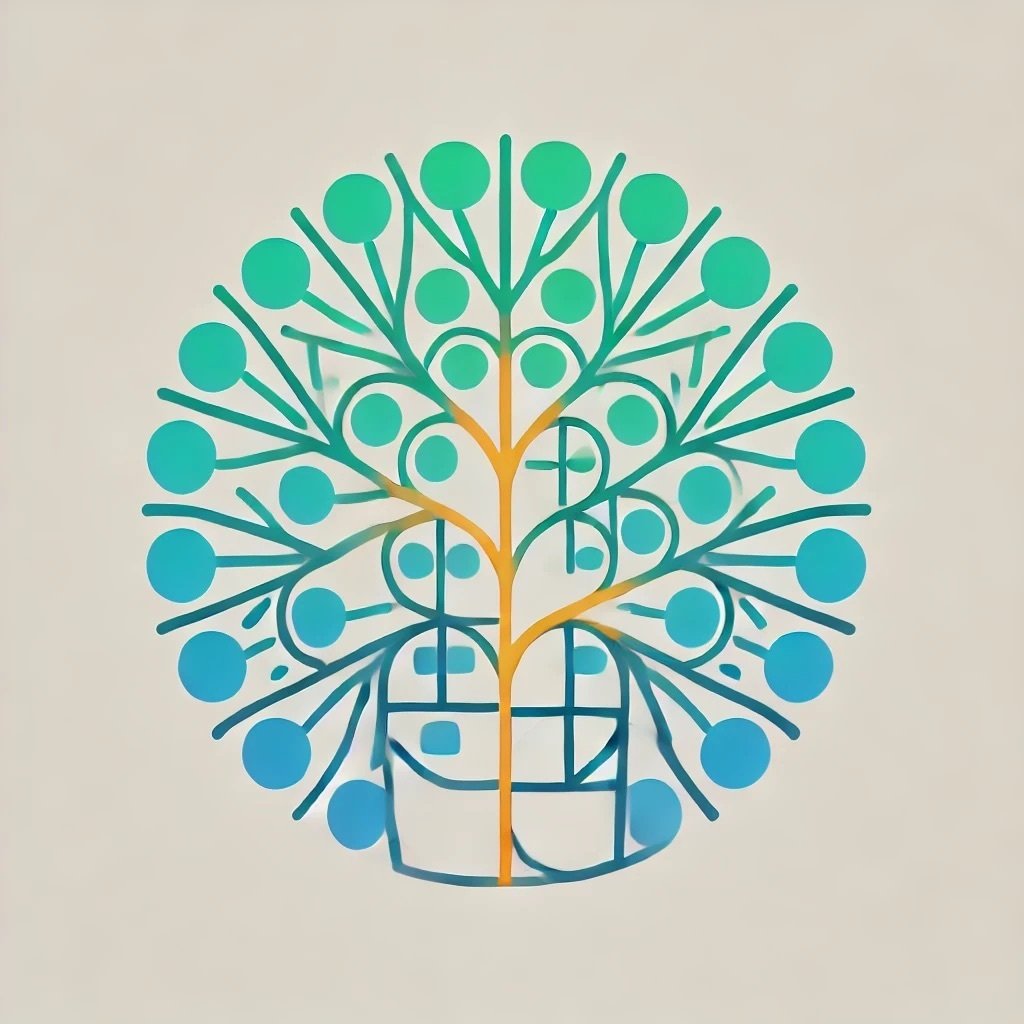
フィボナッチ数〜スタバで学ぶ数学〜
1. マイクロブレンドNo.21

1.1. マイクロブレンドNo.21とは?
スターバックスの「マイクロブレンドNo.21」は、特別なエスプレッソ体験を提供するために開発されたコーヒーブレンドです。このコーヒーは、ラテンアメリカとアフリカのコーヒー豆を絶妙な割合でブレンドし、豊かな味わいとバランスを実現しています。特に、ラテンアメリカの豆が濃厚なチョコレートのような風味を提供し、アフリカの豆が複雑でフルーティーな味わいを加えることで、エスプレッソとしても、ラテなどのドリンクとしても、どちらでも最高の一杯を楽しめます。
「マイクロブレンドNo.21」の名は、自然界で最も美しいバランスを象徴する「黄金比」に由来し、このコーヒーはその名の通り、どの場面でも完璧な調和を提供します。
1.2. No.21の「21」は黄金比
「マイクロブレンドNo.21」の名前に含まれる「21」は、ギリシャ文字の第21字である「φ(ファイ)」、すなわち黄金比を象徴しています。黄金比は、自然界で見られる美しいバランスや調和を表し、古代から芸術や建築においても理想的な比率として用いられてきました。この比率は、マイクロブレンドNo.21の味わいに反映されており、ラテンアメリカとアフリカの豆が完璧な割合でブレンドされることで、深い満足感を提供します。
スターバックスは、この黄金比を取り入れたブレンドを通じて、自然の美しさと同じように調和の取れた味わいを楽しむことができる一杯を提供しています。
1.3. No.21の「21」はフィボナッチ数
「マイクロブレンドNo.21」の「21」は、フィボナッチ数の一つでもあります。フィボナッチ数は、前の二つの数を足した数が次の数となる自然数列で、自然界や芸術においても頻繁に見られるパターンです。この数列は、黄金比にも関連しており、21という数はその中で特に重要な位置を占めています。スターバックスの「マイクロブレンドNo.21」は、このフィボナッチ数の特性を取り入れ、絶妙なバランスと調和を持った味わいを実現しています。
21という数は、自然の秩序と美しさを象徴しており、コーヒーの味わいにおいてもその魅力を感じることができます。
1.4. No.21のカードのらせんはフィボナッチ数の表現
「マイクロブレンドNo.21」のカードデザインに描かれている貝のらせんは、フィボナッチ数を表しています。このらせんは、フィボナッチ数列に基づいて成り立っており、自然界で見られる多くの形状と共通しています。フィボナッチらせんは、葉の配置、花びらの数、貝殻の形状など、さまざまな自然の中で見られ、その美しさと調和は人々を魅了してきました。スターバックスは、このフィボナッチらせんをデザインに取り入れることで、「マイクロブレンドNo.21」が持つ自然のバランスと美しさを視覚的にも表現しています。
このカードを手に取ることで、自然の法則に基づいた美しさを感じることができ、コーヒーの味わいをさらに深く楽しむことができます。
2.フィボナッチ数

2.1. フィボナッチ数とは?
フィボナッチ数とは、自然数列の一つであり、各数が前の二つの数を足したもので構成されます。最初の二つの数は1と1で始まり、次に続く数は2、3、5、8、13、21というように展開されていきます。フィボナッチ数列は、自然界や芸術、建築において頻繁に見られ、特に黄金比との関連が知られています。この数列の特性により、自然の秩序や美しさを理解する上で重要な役割を果たしています。
2.2. フィボナッチ数の魅力
フィボナッチ数の魅力は、その自然界における普遍性と美しさにあります。例えば、花の花びらの数や木の枝分かれのパターン、貝殻のらせん形状など、フィボナッチ数は自然の中で見事なバランスと秩序を持って存在しています。また、この数列は黄金比とも深い関連があり、芸術や建築においても理想的な比率として用いられています。フィボナッチ数が示す調和と対称性は、自然の中にある美しさを再発見する手助けとなり、その数学的な特性が私たちに深い感動を与えるのです。
2.3. フィボナッチ数の3つの具体例
花の花びらの数
多くの花の花びらの数はフィボナッチ数に基づいています。例えば、ユリの花は3枚、バラは5枚、デイジーは34枚など、これらの数はフィボナッチ数列に含まれます。これは、植物が成長する際に、最も効率的な配置を自然に選び取る結果として現れるものです。貝殻のらせん形状
貝殻のらせん形状は、フィボナッチ数列に基づいています。このらせんは、各部位が前の部位と黄金比の関係にあるため、自然に美しい形を形成します。この形状は、自然界においても建築やデザインにおいても、その美しさが認識されています。樹木の枝分かれ
樹木が成長する際の枝分かれのパターンも、フィボナッチ数に基づいています。枝が分かれる位置や方向は、植物が光を効率よく取り入れるために進化した結果として、フィボナッチ数に従った配置となることが多いのです。このパターンは、植物が生存競争に勝つための最適化された成長戦略と言えるでしょう。
3.Microblend No.21

3.1. What is Microblend No.21?
Starbucks' "Microblend No.21" is a coffee blend developed to provide a special espresso experience. This coffee blend combines Latin American and African coffee beans in a perfect ratio to create a rich flavor and balance. Specifically, the Latin American beans offer a deep, chocolate-like flavor, while the African beans add a complex, fruity taste, making it an excellent choice for both espresso and lattes. The name "Microblend No.21" is derived from the "Golden Ratio," symbolizing the most beautiful balance in nature. True to its name, this coffee delivers perfect harmony in every cup.
3.2. The "21" in No.21 Represents the Golden Ratio
The "21" in "Microblend No.21" symbolizes the Golden Ratio, often represented by the 21st letter of the Greek alphabet, "φ (phi)." The Golden Ratio is known for its perfect balance and harmony found in nature and has been used as an ideal proportion in art and architecture since ancient times. This ratio is reflected in the taste of Microblend No.21, where the Latin American and African beans are blended in a perfect ratio, offering deep satisfaction. Through this blend, Starbucks provides a cup of coffee that embodies the same harmony and beauty found in nature.
3.3. The "21" in No.21 Represents the Fibonacci Number
The "21" in "Microblend No.21" is also a Fibonacci number. The Fibonacci sequence is a series of numbers where each number is the sum of the two preceding ones, often seen in nature and art. This sequence is closely related to the Golden Ratio, and the number 21 holds a significant position within it. Starbucks' "Microblend No.21" incorporates the characteristics of this Fibonacci number, achieving a taste that is perfectly balanced and harmonious. The number 21 symbolizes the order and beauty of nature, and this charm is reflected in the coffee's flavor.
3.4. The Spiral on the No.21 Card Represents the Fibonacci Sequence
The spiral depicted on the "Microblend No.21" card represents the Fibonacci sequence. This spiral is based on the Fibonacci sequence and is commonly found in nature. Fibonacci spirals can be seen in leaf arrangements, the number of petals on flowers, and the shape of seashells, where their beauty and harmony have long fascinated people. By incorporating this Fibonacci spiral into the design, Starbucks visually expresses the natural balance and beauty of "Microblend No.21." Holding this card allows you to feel the beauty based on the laws of nature, enhancing your enjoyment of the coffee's flavor.
4.Fibonacci Sequence

4.1. What is the Fibonacci Sequence?
The Fibonacci sequence is a series of natural numbers where each number is the sum of the two preceding ones. It begins with the numbers 1 and 1, followed by 2, 3, 5, 8, 13, 21, and so on. The Fibonacci sequence is often seen in nature, art, and architecture and is closely related to the Golden Ratio. This sequence plays a crucial role in understanding the order and beauty of nature.
4.2. The Appeal of the Fibonacci Sequence
The appeal of the Fibonacci sequence lies in its universality and beauty in nature. For example, the number of petals on flowers, the branching patterns of trees, and the spiral shapes of seashells all follow the Fibonacci sequence, exhibiting remarkable balance and order in nature. Additionally, this sequence is closely related to the Golden Ratio, making it an ideal proportion used in art and architecture. The harmony and symmetry shown by the Fibonacci sequence help us rediscover the beauty in nature, and its mathematical properties offer us a profound sense of wonder.
4.3. Three Concrete Examples of the Fibonacci Sequence
The Number of Petals on Flowers
Many flowers have a number of petals based on the Fibonacci sequence. For instance, lilies have 3 petals, roses have 5 petals, and daisies have 34 petals. These numbers are part of the Fibonacci sequence and result from plants naturally choosing the most efficient arrangement for growth.The Spiral Shape of Seashells
The spiral shape of seashells is based on the Fibonacci sequence. This spiral forms because each part is in a Golden Ratio with the previous part, creating a naturally beautiful shape. This shape is recognized for its beauty in both nature and in architecture and design.The Branching Patterns of Trees
The branching patterns of trees often follow the Fibonacci sequence. The positions and directions of branches are arranged according to this sequence as an evolutionary strategy to optimize light capture. This pattern represents a highly optimized growth strategy that helps plants thrive in competitive environments.
この記事が気に入ったらサポートをしてみませんか?
